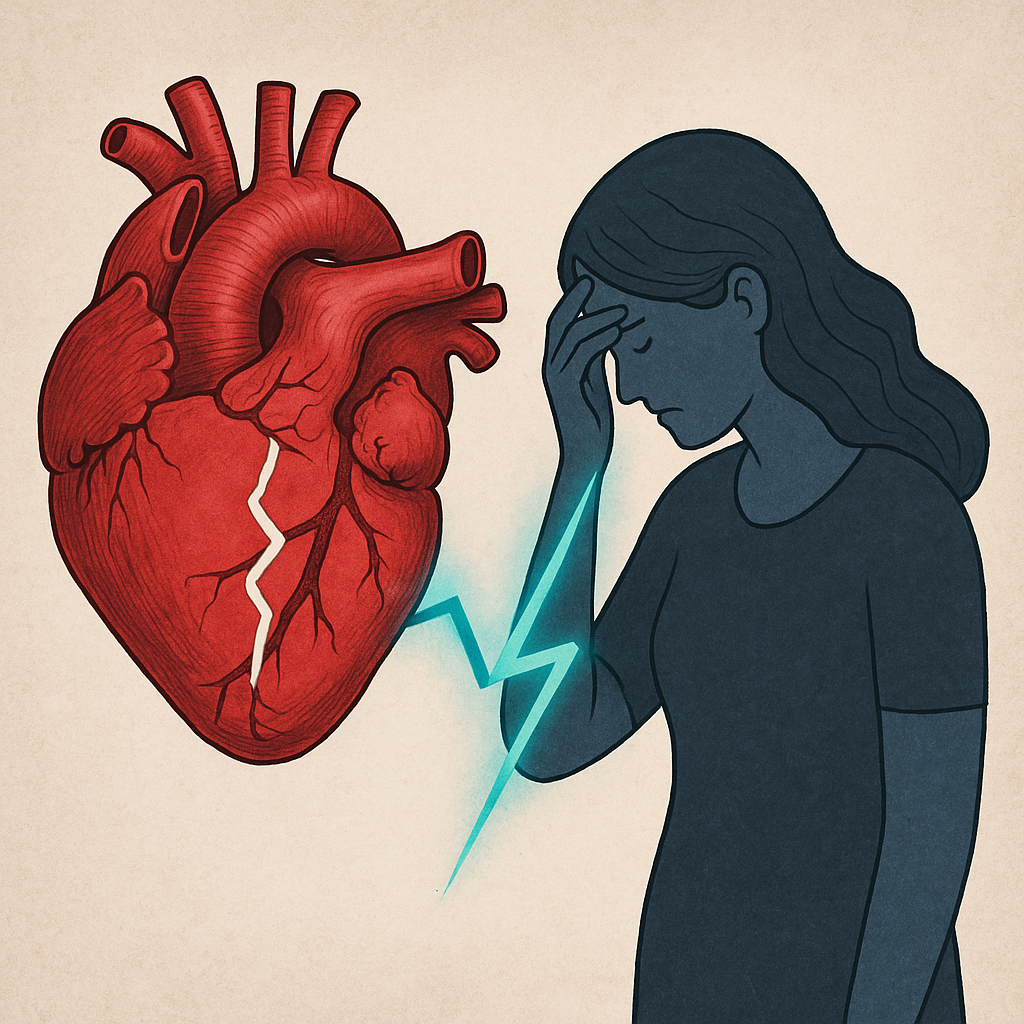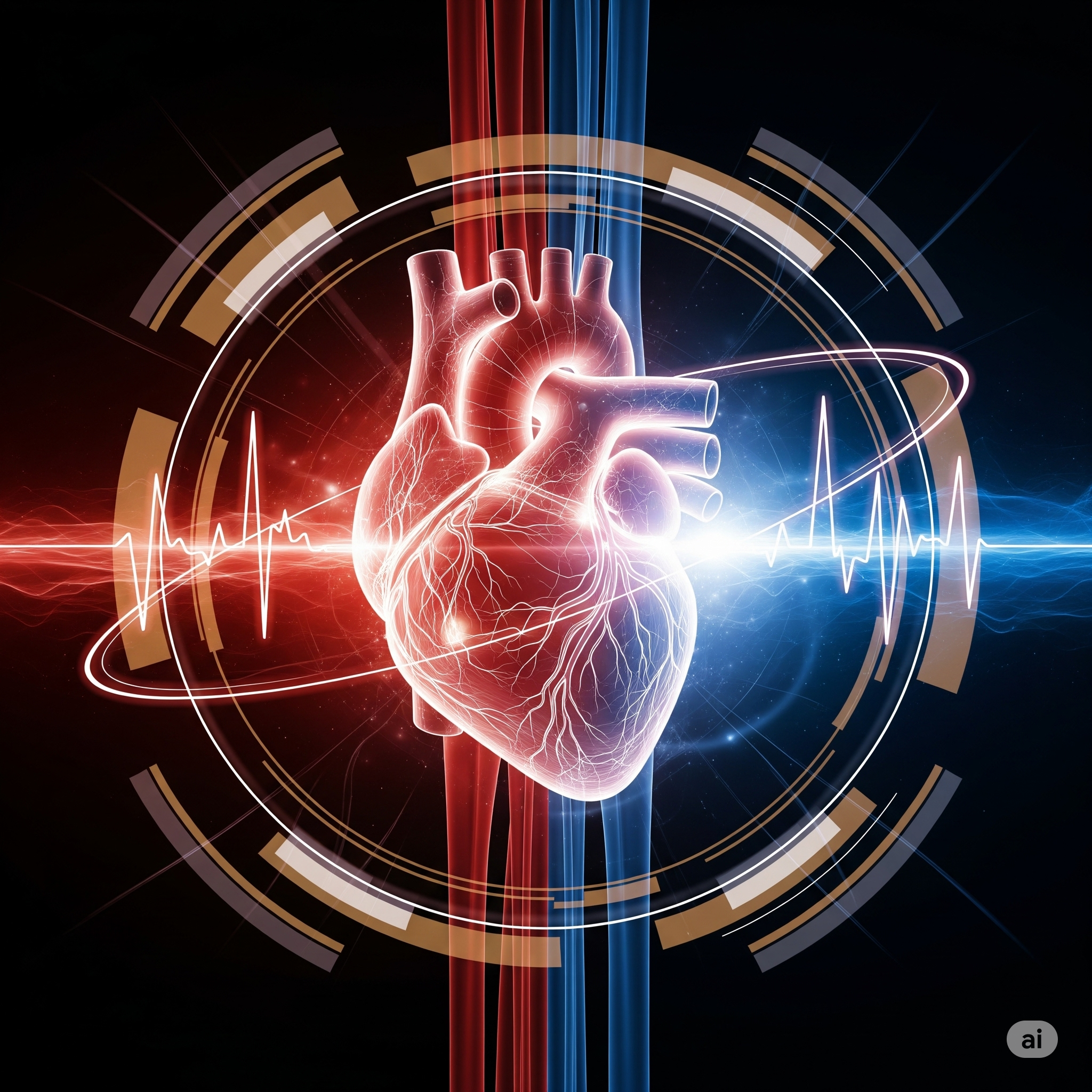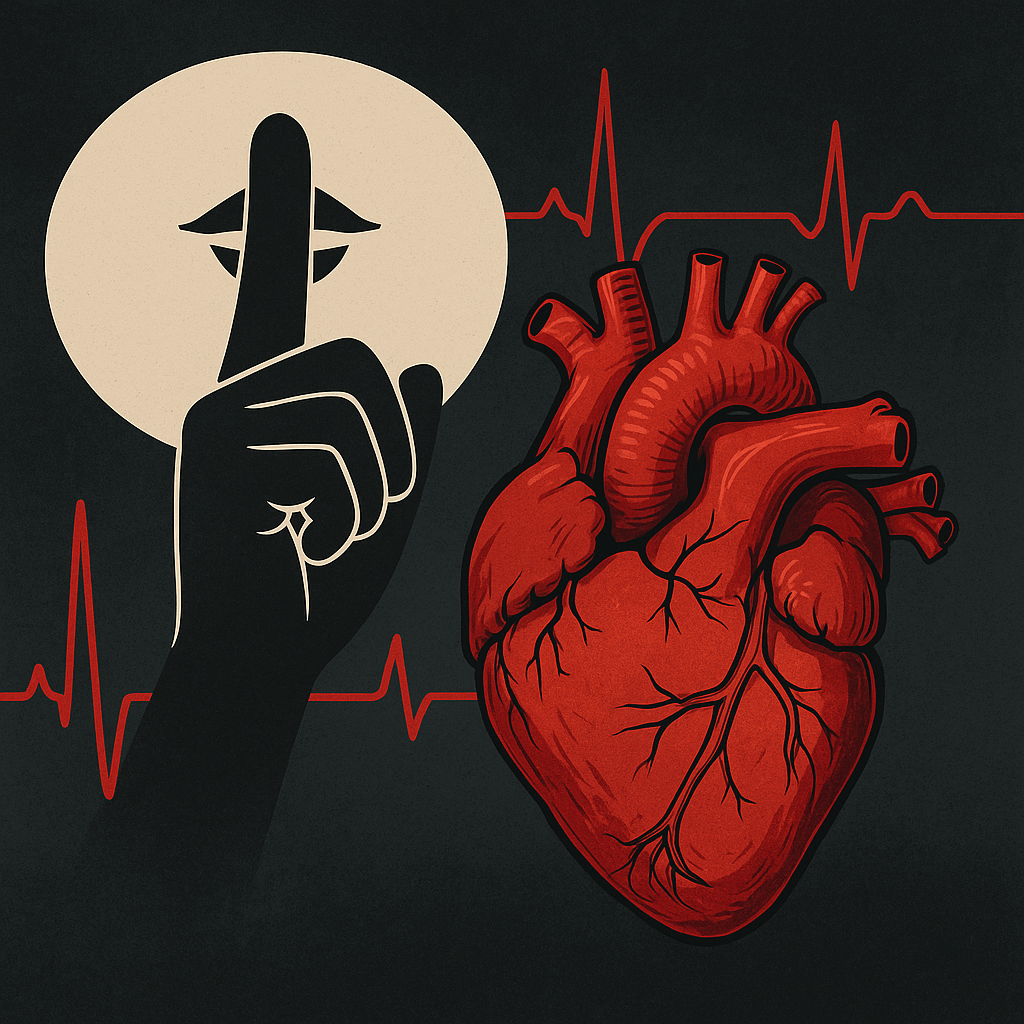Introduction: When Emotions Break the Heart
We’ve all heard the expression: “She died of a broken heart.”
It sounds poetic—like something from a novel or an old love song. But what if it’s not just a metaphor?
In recent years, doctors and scientists have discovered a startling truth: extreme emotional stress can literally damage the heart. This condition is called Takotsubo cardiomyopathy, more commonly known as Broken Heart Syndrome.
Triggered by events like the loss of a loved one, divorce, sudden shock, or even extreme happiness, this syndrome mimics the symptoms of a heart attack: chest pain, shortness of breath, abnormal EKG changes, and elevated cardiac enzymes.
But unlike a typical heart attack caused by blocked arteries, Broken Heart Syndrome is driven by emotional trauma, not cholesterol.
This article will take you inside the fascinating intersection of psychology and cardiology. You’ll learn:
- What causes Broken Heart Syndrome
- How it’s diagnosed and treated
- Who’s at risk
- And how your emotions truly impact your cardiovascular health
Because sometimes, a heartbreak isn’t just in your head—it’s in your chest.
1. What Is Broken Heart Syndrome?
Broken Heart Syndrome—also known as stress-induced cardiomyopathy or Takotsubo cardiomyopathy—is a temporary heart condition that occurs in response to intense emotional or physical stress.
It was first described in Japan in 1990. The name “Takotsubo” refers to a Japanese octopus trap, because the left ventricle of the heart temporarily takes on that balloon-like shape during an episode.
Although the condition mimics a heart attack, its mechanism is different. In a typical heart attack, a blocked coronary artery prevents blood flow to the heart muscle, causing tissue death. In Broken Heart Syndrome, the arteries are usually not blocked, but the heart’s ability to pump blood is suddenly weakened, especially at the apex (tip) of the left ventricle.
🧠 So, what causes this dysfunction?
It’s believed that a sudden surge of stress hormones—particularly adrenaline (epinephrine) and norepinephrine—stuns the heart. This “catecholamine storm” overwhelms the cardiac muscle, leading to temporary heart failure.
2. Triggers: When Emotions Turn Toxic
Broken Heart Syndrome can be triggered by a wide range of emotional or physical stressors. Some of the most common include:
💔 Emotional Triggers:
- Death of a loved one
- Divorce or breakup
- Serious argument
- Bad news (e.g., financial loss, job termination)
- Public embarrassment or humiliation
😃 Positive Triggers (Yes, really!):
- Winning the lottery
- A surprise party
- Intense excitement (also called “happy heart syndrome”)
🏥 Physical Triggers:
- Surgery or anesthesia
- Severe pain
- Asthma attack
- Neurological events (like seizures or strokes)
In some cases, no trigger can be identified—making the syndrome even more mysterious and personal.
3. Who Is at Risk?
Although Broken Heart Syndrome can affect anyone, research has shown that it has a very specific demographic pattern.
🧍♀️ Most commonly affected group:
- Postmenopausal women (typically ages 50–75)
- Women account for over 90% of all cases
Why women?
It’s believed that estrogen may play a protective role in cardiovascular response to stress. After menopause, estrogen levels drop significantly, potentially making the heart more vulnerable to the effects of sudden adrenaline surges.
Other risk factors include:
- A history of anxiety or depression
- High emotional reactivity or sensitivity to stress
- Neurological conditions like epilepsy or head trauma
- Previous or family history of cardiomyopathy
It’s important to note: Broken Heart Syndrome is not the result of weakness—it’s a real physiological response to overwhelming emotional input.
4. Symptoms and How It Mimics a Heart Attack
Broken Heart Syndrome often strikes suddenly and presents like a classic acute coronary syndrome (ACS). This is why it is frequently misdiagnosed as a heart attack.
Common symptoms include:
- Chest pain or tightness
- Shortness of breath
- Irregular heartbeat or palpitations
- Lightheadedness or fainting
- Fatigue
In some severe cases, it can even lead to:
- Pulmonary edema (fluid in the lungs)
- Cardiogenic shock (heart suddenly can’t pump enough blood)
- Life-threatening arrhythmias
However, when doctors perform tests like coronary angiography, they often find no arterial blockages, which is a key clue that it may be Broken Heart Syndrome.
5. Diagnosis: Differentiating from a Heart Attack
Diagnosing Broken Heart Syndrome can be challenging, especially in emergency settings, because it mimics a heart attack both in symptoms and initial test results.
🧪 Typical diagnostic steps include:
- Electrocardiogram (ECG/EKG):
May show ST-segment elevation or T-wave inversions—patterns similar to myocardial infarction. - Blood tests:
Cardiac enzymes like troponin may be elevated, but not as high as in a full-blown heart attack. - Echocardiogram (heart ultrasound):
Reveals the distinctive “ballooning” of the left ventricle—apical hypokinesia with basal hyperkinesia. - Coronary angiography:
Shows clean coronary arteries (no significant blockage), which helps rule out classic heart attack. - Cardiac MRI:
Sometimes used to confirm the absence of infarction and assess inflammation or scarring.
This diagnostic approach is important because the treatment for Takotsubo is different from that of a heart attack caused by clogged arteries.
6. Treatment and Recovery
The good news? Broken Heart Syndrome is usually reversible.
Most patients recover completely within days to weeks with proper care. However, the initial phase can be dangerous and requires close monitoring.
🏥 Acute phase treatment:
- Hospitalization and cardiac monitoring
- Oxygen therapy
- Beta-blockers to reduce heart rate and adrenaline impact
- ACE inhibitors or ARBs to support heart function
- Diuretics if pulmonary edema is present
- Anticoagulants in some cases
💊 Long-term management:
- Treat underlying anxiety, depression, or trauma
- Stress-reduction strategies (mindfulness, therapy)
- Heart-protective medications (often continued for a few months)
The recurrence rate is around 5–10%, meaning that for most people, it’s a one-time event.
7. What This Syndrome Tells Us About the Heart–Mind Connection
Broken Heart Syndrome isn’t just a curious medical condition—it’s powerful evidence that emotional health and physical health are deeply intertwined.
🧠🫀 Key insights:
- Emotions are not “just in your head”—they produce measurable physiological effects, even life-threatening ones.
- The heart responds to neurochemical surges triggered by emotional states.
- Your brain and heart are connected via the autonomic nervous system, especially the sympathetic (“fight or flight”) branch, which floods the body with stress hormones during emotional turmoil.
Recent research has also shown that people with Takotsubo cardiomyopathy often have altered activity in the amygdala, the brain’s emotional processing center. This suggests that heightened emotional sensitivity may predispose certain individuals to this condition.
Even more fascinating: Broken Heart Syndrome can sometimes be triggered by positive events, proving that it’s not just sadness that can overwhelm the heart—any extreme emotional surge can do it.
This reinforces a growing perspective in modern medicine:
“To truly care for the heart, we must also care for the mind.”
8. Prevention and Emotional Resilience
While you can’t always prevent emotional shocks in life, you can build a more resilient nervous system to reduce their impact.
🛡️ Evidence-based strategies to protect heart–mind health:
- Mindfulness and meditation: shown to lower cortisol and improve heart rate variability
- Cognitive behavioral therapy (CBT): helps reframe negative thought patterns
- Regular physical activity: supports both mood and cardiac function
- Social support and connection: loneliness is a risk factor for heart disease
- Avoiding stimulant overuse: caffeine and decongestants can heighten sympathetic activity
If you’ve experienced major loss or trauma, seeking psychological support is not a luxury—it may be a lifesaving intervention.
9. Final Thoughts: When the Heart Speaks, Listen
Broken Heart Syndrome reminds us that the heart is not just a pump—it’s a mirror of our emotional world.
It can ache, it can break, and sometimes, it needs healing beyond what medicine alone can offer.
As science continues to uncover the complex ways our emotions affect our bodies, one message becomes clear:
Caring for your heart means caring for your emotional well-being.
So the next time grief hits hard or joy feels overwhelming, remember: your heart feels it too.
And it’s okay to pause, breathe, and tend gently to both your body and your soul.
Because the most powerful medicine may begin with understanding that sometimes, you really can feel heartbreak—and that healing is both emotional and physical.


